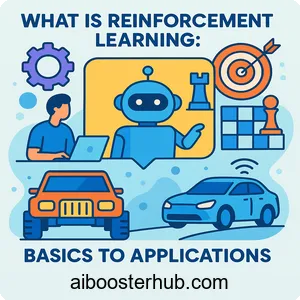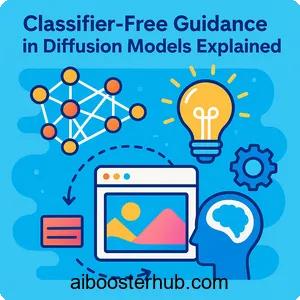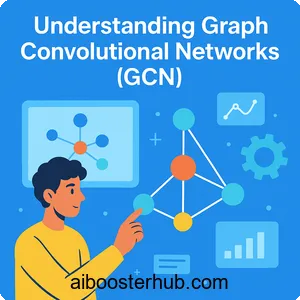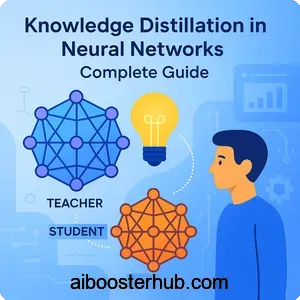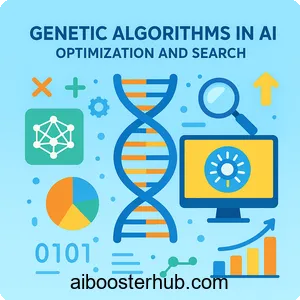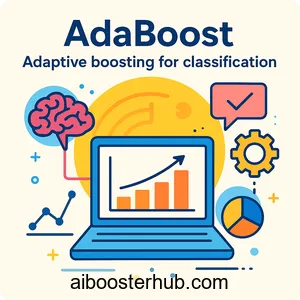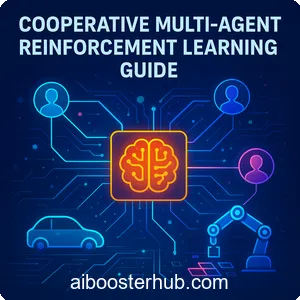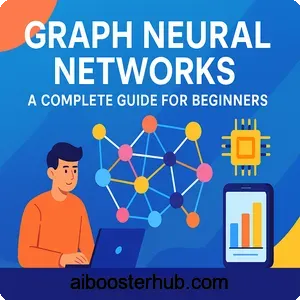AI Text Classification and Tokenization: Complete Guide
Understanding how artificial intelligence processes and categorizes text is fundamental to building effective natural language processing systems. Text classification and tokenization form the backbone of modern AI applications, from sentiment analysis to machine translation. This comprehensive guide explores the essential concepts, techniques, and practical implementations that power today’s most sophisticated language models.
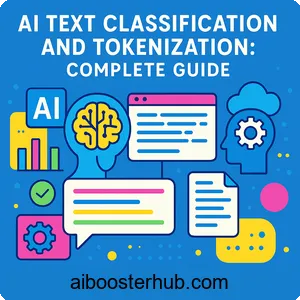
Content
Toggle1. Understanding AI text classification
AI text classification represents one of the most practical applications of machine learning in natural language processing. At its core, an ai text classifier is a system that automatically assigns predefined categories or labels to text documents based on their content. This technology powers everything from spam filters in your email to content moderation on social media platforms.
What is text classification?
Text classification is the process of organizing text into structured categories. Unlike simple keyword matching, modern AI text classifiers understand context, semantics, and nuanced meanings within text. These systems learn patterns from labeled training data and apply those patterns to categorize new, unseen text.
Consider a customer service system that routes incoming emails. An ai text classifier can automatically determine whether an email relates to billing issues, technical support, product inquiries, or complaints. The classifier analyzes the text content, identifies key patterns and indicators, and assigns the appropriate category with remarkable accuracy.
Types of text classification tasks
Text classification encompasses several distinct task types. Binary classification involves categorizing text into one of two classes, such as spam versus legitimate email. Multi-class classification extends this to multiple mutually exclusive categories, like classifying news articles into sports, politics, entertainment, or technology. Multi-label classification allows a single document to belong to multiple categories simultaneously, useful when a movie review might be tagged as both “comedy” and “romance.”
How AI text classifiers work
Modern ai text classifier systems typically follow a pipeline approach. First, raw text undergoes preprocessing and tokenization to convert it into a format machines can process. Next, the system extracts features or generates embeddings that capture the text’s semantic meaning. Finally, a machine learning model processes these features to predict the appropriate classification.
Traditional approaches used methods like Naive Bayes, Support Vector Machines, or logistic regression with hand-crafted features. Contemporary systems leverage deep learning architectures, particularly transformer-based models like BERT, RoBERTa, or GPT variants, which can capture complex contextual relationships within text.
2. Introduction to tokenization
Before any AI system can process text, it must first break that text into manageable pieces. This process, called tokenization, is the crucial first step in virtually every NLP pipeline. Understanding how tokenization works is essential for anyone working with text-based AI systems.
What is a tokenizer?
A tokenizer is a tool or algorithm that splits text into smaller units called tokens. These tokens might be words, subwords, characters, or even bytes, depending on the tokenization strategy. The tokenizer serves as the bridge between human-readable text and the numerical representations that machine learning models require.
Think of a tokenizer as a translator that converts the continuous stream of text into discrete, processable units. For the sentence “Tokenization is essential,” a simple word-level tokenizer might produce the tokens: [“Tokenization”, “is”, “essential”]. However, different tokenizers can produce dramatically different results for the same input text.
Why tokenization matters
The quality of tokenization directly impacts model performance. Poor tokenization can lead to loss of semantic information, increased computational costs, or inability to handle out-of-vocabulary words. Effective tokenization balances vocabulary size with semantic preservation while maintaining computational efficiency.
Consider the word “unhappiness.” A character-level tokenizer would split this into individual letters, losing the semantic structure. A word-level tokenizer treats it as a single unit but struggles with variations like “unhappy” or “happiness.” Subword tokenization, however, might break it into [“un”, “happiness”], preserving both the root word and the negation prefix.
3. Common tokenization techniques
Different tokenization approaches offer various trade-offs between vocabulary size, semantic preservation, and computational efficiency. Understanding these methods helps you choose the right strategy for your specific use case.
Word-based tokenization
Word-based tokenization splits text on whitespace and punctuation boundaries. This intuitive approach treats each word as a distinct token. While simple to implement and understand, word-based tokenization faces challenges with morphologically rich languages, compound words, and handling out-of-vocabulary terms.
import re
def simple_word_tokenize(text):
# Split on whitespace and punctuation
tokens = re.findall(r'\b\w+\b', text.lower())
return tokens
text = "AI text classification requires careful tokenization!"
tokens = simple_word_tokenize(text)
print(tokens)
# Output: ['ai', 'text', 'classification', 'requires', 'careful', 'tokenization']Character-based tokenization
Character-level tokenization treats each individual character as a token. This approach eliminates out-of-vocabulary issues and keeps vocabulary size minimal. However, it significantly increases sequence length and makes it harder for models to learn semantic relationships, as meaningful patterns span many tokens.
def char_tokenize(text):
return list(text)
text = "NLP"
tokens = char_tokenize(text)
print(tokens)
# Output: ['N', 'L', 'P']Subword tokenization
Subword tokenization represents the modern standard for most NLP applications. These methods split text into units that are smaller than words but larger than characters. The most popular subword methods include Byte-Pair Encoding (BPE), WordPiece, and Unigram.
Byte-pair encoding
Byte-pair encoding starts with a character-level vocabulary and iteratively merges the most frequent pairs of tokens. This creates a vocabulary that includes common words as single tokens while breaking rare words into subword units. The algorithm continues until reaching a specified vocabulary size.
The BPE algorithm can be formalized as follows. Given a corpus of text, we initialize the vocabulary \( V \) with all unique characters. At each iteration \( i \), we find the most frequent pair of consecutive tokens \( (t_1, t_2) \) and merge them into a new token \( t_{new} \). The frequency of the new token is:
$$f(t_{\text{new}}) = f(t_1, t_2)$$
This process continues until the vocabulary reaches size \( |V| = |V_0| + k \), where \( |V_0| \) is the initial character vocabulary size and \( k \) is the number of merge operations.
from collections import Counter
def get_vocab(corpus):
vocab = Counter()
for word, freq in corpus.items():
symbols = word.split()
for i in range(len(symbols)-1):
vocab[(symbols[i], symbols[i+1])] += freq
return vocab
def merge_vocab(pair, v_in):
v_out = {}
bigram = ' '.join(pair)
replacement = ''.join(pair)
for word in v_in:
w_out = word.replace(bigram, replacement)
v_out[w_out] = v_in[word]
return v_out
# Example corpus
corpus = {'l o w ': 5, 'l o w e r ': 2,
'n e w e s t ': 6, 'w i d e s t ': 3}
# Get most frequent pair
vocab = get_vocab(corpus)
print("Most frequent pairs:", vocab.most_common(3))WordPiece tokenization
WordPiece, used by BERT and related models, works similarly to BPE but selects merges based on likelihood rather than raw frequency. Instead of simply choosing the most frequent pair, WordPiece selects pairs that maximize the likelihood of the training data. This approach often produces more linguistically meaningful subword units.
4. OpenAI text classifier and tokenization
OpenAI has developed sophisticated approaches to both text classification and tokenization that have influenced the broader AI community. Understanding these implementations provides valuable insights into production-grade NLP systems.
OpenAI’s AI text classifier
The openai ai text classifier represents an application of advanced language models to the task of distinguishing AI-generated text from human-written content. This classifier analyzes linguistic patterns, coherence structures, and stylistic features that differ between human and machine-generated text.
While the specific architecture details may vary, such classifiers typically leverage transfer learning from large language models. These models have learned rich representations of language during pretraining on massive text corpora, which can then be fine-tuned for the specific classification task.
OpenAI tokenizer implementation
OpenAI’s GPT series models use a BPE-based tokenizer called tiktoken. This tokenizer efficiently handles the conversion between text and tokens, with several key characteristics. It uses byte-level encoding to handle any Unicode text without requiring character-level fallbacks. The vocabulary typically contains 50,000+ tokens, balancing vocabulary size with sequence length efficiency.
# Using tiktoken (conceptual example - requires installation)
# pip install tiktoken
# import tiktoken
# def tokenize_with_openai(text, model="gpt-3.5-turbo"):
# encoding = tiktoken.encoding_for_model(model)
# tokens = encoding.encode(text)
# return tokens, len(tokens)
# text = "Text classification and tokenization are fundamental NLP tasks."
# tokens, token_count = tokenize_with_openai(text)
# print(f"Tokens: {tokens}")
# print(f"Token count: {token_count}")
# Alternative: Simple BPE demonstration
def simple_bpe_encode(text, vocab):
"""Simplified BPE encoding demonstration"""
tokens = list(text)
while len(tokens) > 1:
# Find most frequent pair in vocabulary
pairs = [(tokens[i], tokens[i+1]) for i in range(len(tokens)-1)]
if not pairs:
break
# This is simplified - real BPE uses learned vocabulary
merged = False
for pair in set(pairs):
if ''.join(pair) in vocab:
# Merge this pair
new_tokens = []
i = 0
while i < len(tokens):
if i < len(tokens)-1 and tokens[i] == pair[0] and tokens[i+1] == pair[1]:
new_tokens.append(''.join(pair))
i += 2
merged = True
else:
new_tokens.append(tokens[i])
i += 1
tokens = new_tokens
break
if not merged:
break
return tokens
vocab = {'ai', 'text', 'class', 'token'}
text = "aitext"
result = simple_bpe_encode(text, vocab)
print(f"Encoded: {result}")Understanding token limits
Every language model has a maximum context window measured in tokens. For GPT-3.5, this is typically 4,096 tokens, while GPT-4 variants support 8,192, 32,768, or even 128,000 tokens. Understanding how your text converts to tokens is crucial for staying within these limits.
The relationship between words and tokens varies by language and content. In English, the ratio is approximately 1 word ≈ 1.3 tokens on average. Technical content, code, or non-English languages may have different ratios. Complex words often break into multiple tokens, while common words typically map to single tokens.
5. Text preprocessing and chunking
Effective text preprocessing and chunking are essential for preparing data for both classification and tokenization. These steps can significantly impact model performance and computational efficiency.
Text preprocessing techniques
Before tokenization, text typically undergoes several preprocessing steps. Lowercasing standardizes text, though this should be avoided for case-sensitive tasks. Removing special characters and HTML tags cleans web-scraped content. Handling contractions expands forms like “don’t” to “do not” for consistency. Removing stopwords can reduce dimensionality, though modern models often benefit from keeping them for context.
import re
import string
def preprocess_text(text, lowercase=True, remove_punctuation=True):
"""Basic text preprocessing"""
# Lowercase
if lowercase:
text = text.lower()
# Remove URLs
text = re.sub(r'http\S+|www\S+|https\S+', '', text, flags=re.MULTILINE)
# Remove HTML tags
text = re.sub(r'<.*?>', '', text)
# Remove punctuation
if remove_punctuation:
text = text.translate(str.maketrans('', '', string.punctuation))
# Remove extra whitespace
text = ' '.join(text.split())
return text
sample_text = """
Chunking strategies
Chunking involves dividing long documents into smaller segments that fit within model token limits. This is essential when working with documents longer than the model’s context window. Several strategies exist for effective chunking.
Fixed-size chunking splits text into equal-sized segments, which is simple but may break semantic units. Sentence-based chunking preserves complete sentences, maintaining semantic coherence. Paragraph-based chunking keeps logical document structure intact. Sliding window chunking creates overlapping segments to maintain context between chunks. Semantic chunking uses embeddings to create segments with coherent meaning.
def chunk_by_tokens(text, tokenizer, max_tokens=512, overlap=50):
"""Chunk text by token count with overlap"""
tokens = tokenizer(text)
chunks = []
start = 0
while start < len(tokens):
end = start + max_tokens
chunk_tokens = tokens[start:end]
chunks.append(chunk_tokens)
start = end - overlap
return chunks
def chunk_by_sentences(text, max_sentences=5):
"""Chunk text by sentence count"""
# Simple sentence splitting (use spaCy or NLTK for better results)
sentences = re.split(r'[.!?]+', text)
sentences = [s.strip() for s in sentences if s.strip()]
chunks = []
for i in range(0, len(sentences), max_sentences):
chunk = ' '.join(sentences[i:i+max_sentences])
chunks.append(chunk)
return chunks
long_text = """
Text classification is a fundamental task in NLP. It involves categorizing text into predefined classes.
Modern systems use deep learning. These models achieve high accuracy. However, they require careful
preprocessing. Tokenization is the first step. It converts text into processable units. Different
tokenizers produce different results. Choosing the right tokenizer matters.
"""
# Sentence-based chunking
sentence_chunks = chunk_by_sentences(long_text, max_sentences=3)
for i, chunk in enumerate(sentence_chunks):
print(f"Chunk {i+1}: {chunk}\n")Maintaining context in chunks
When chunking documents, preserving context is critical for accurate classification. Overlapping chunks ensure that important information near chunk boundaries isn’t lost. Including metadata like document titles or section headers provides additional context. Using sliding windows with strategic overlap balances context preservation with computational efficiency.
6. Building a text classification system
Creating a production-ready text classification system requires integrating tokenization, preprocessing, and machine learning components into a cohesive pipeline. This section demonstrates practical implementation patterns.
Complete classification pipeline
A robust text classification system combines all the components we’ve discussed. The pipeline begins with data ingestion and preprocessing, proceeds through tokenization, extracts features or embeddings, applies the classification model, and produces final predictions with confidence scores.
from sklearn.feature_extraction.text import TfidfVectorizer
from sklearn.linear_model import LogisticRegression
from sklearn.pipeline import Pipeline
from sklearn.model_selection import train_test_split
import numpy as np
class TextClassificationSystem:
def __init__(self, max_features=5000):
"""Initialize text classification system"""
self.pipeline = Pipeline([
('tfidf', TfidfVectorizer(
max_features=max_features,
ngram_range=(1, 2),
preprocessor=self.preprocess
)),
('classifier', LogisticRegression(
max_iter=1000,
class_weight='balanced'
))
])
def preprocess(self, text):
"""Preprocessing function"""
text = text.lower()
text = re.sub(r'[^\w\s]', '', text)
return text
def tokenize_text(self, text):
"""Custom tokenization"""
return text.split()
def train(self, X_train, y_train):
"""Train the classifier"""
self.pipeline.fit(X_train, y_train)
return self
def predict(self, texts):
"""Predict classes for texts"""
return self.pipeline.predict(texts)
def predict_proba(self, texts):
"""Predict class probabilities"""
return self.pipeline.predict_proba(texts)
def evaluate(self, X_test, y_test):
"""Evaluate model performance"""
from sklearn.metrics import classification_report
predictions = self.predict(X_test)
return classification_report(y_test, predictions)
# Example usage
sample_data = [
("This product is amazing and works perfectly!", "positive"),
("Terrible quality, waste of money", "negative"),
("Great value for the price, highly recommend", "positive"),
("Disappointed with the purchase", "negative"),
("Exceeded my expectations", "positive"),
("Poor customer service and defective item", "negative"),
]
texts, labels = zip(*sample_data)
X_train, X_test, y_train, y_test = train_test_split(
texts, labels, test_size=0.3, random_state=42
)
# Train system
classifier = TextClassificationSystem()
classifier.train(X_train, y_train)
# Make predictions
test_text = ["This is an excellent product"]
prediction = classifier.predict(test_text)
probabilities = classifier.predict_proba(test_text)
print(f"Prediction: {prediction[0]}")
print(f"Probabilities: {probabilities[0]}")Handling multi-class classification
Multi-class problems require strategies for dealing with imbalanced datasets and multiple output categories. Common approaches include one-vs-rest classification, where a separate binary classifier is trained for each class, and multi-class native algorithms like softmax regression or neural networks with softmax output layers.
For a problem with \( K \) classes, the softmax function converts raw model outputs (logits) into probabilities:
$$P(y = k \mid x) = \frac{e^{z_k}}{\sum_{j=1}^{K} e^{z_j}}$$
where \( z_k \) represents the logit for class \( k \), and the denominator normalizes across all classes to ensure probabilities sum to 1.
Evaluation metrics for text classifiers
Proper evaluation requires metrics beyond simple accuracy. Precision measures the proportion of positive predictions that are correct: \( \text{Precision} = \frac{TP}{TP + FP} \). Recall measures the proportion of actual positives correctly identified: \( \text{Recall} = \frac{TP}{TP + FN} \). The F1 score provides the harmonic mean of precision and recall: \( F1 = 2 \times \frac{\text{Precision} \times \text{Recall}}{\text{Precision} + \text{Recall}} \).
from sklearn.metrics import precision_recall_fscore_support, confusion_matrix
import numpy as np
def detailed_evaluation(y_true, y_pred, labels=None):
"""Comprehensive classifier evaluation"""
# Calculate metrics
precision, recall, f1, support = precision_recall_fscore_support(
y_true, y_pred, average=None, labels=labels
)
# Confusion matrix
cm = confusion_matrix(y_true, y_pred, labels=labels)
# Print results
print("Per-class metrics:")
for i, label in enumerate(labels or sorted(set(y_true))):
print(f"{label}:")
print(f" Precision: {precision[i]:.3f}")
print(f" Recall: {recall[i]:.3f}")
print(f" F1-score: {f1[i]:.3f}")
print(f" Support: {support[i]}")
print("\nConfusion Matrix:")
print(cm)
# Macro and weighted averages
macro_f1 = np.mean(f1)
weighted_f1 = np.average(f1, weights=support)
print(f"\nMacro F1: {macro_f1:.3f}")
print(f"Weighted F1: {weighted_f1:.3f}")
return {
'precision': precision,
'recall': recall,
'f1': f1,
'support': support,
'confusion_matrix': cm
}
# Example evaluation
y_true = ['positive', 'negative', 'positive', 'negative', 'neutral']
y_pred = ['positive', 'negative', 'neutral', 'negative', 'neutral']
metrics = detailed_evaluation(y_true, y_pred,
labels=['positive', 'negative', 'neutral'])7. Advanced topics and best practices
Beyond the fundamentals, several advanced considerations can significantly improve your text classification and tokenization systems. These practices reflect lessons learned from production deployments and research advancements.
Handling domain-specific vocabulary
Standard tokenizers trained on general text may perform poorly on specialized domains like medical, legal, or technical content. Domain adaptation strategies include fine-tuning existing tokenizers on domain-specific corpora, creating custom tokenizers with domain vocabulary, and using domain-aware preprocessing that preserves important terminology.
For instance, in medical text, preserving compound terms like “myocardial infarction” as coherent units rather than splitting them improves classification accuracy. Similarly, in code documentation, keeping function names and technical terms intact maintains semantic integrity.
Dealing with multilingual text
Multilingual scenarios present unique challenges for tokenization and classification. Language-specific tokenizers handle morphological differences between languages. Multilingual models like mBERT or XLM-RoBERTa use shared subword vocabularies across languages. Code-switching detection identifies when multiple languages appear in the same document, requiring special handling.
Optimizing for production deployment
Production systems require careful optimization for latency, throughput, and resource efficiency. Key strategies include batch processing to amortize overhead across multiple documents, caching tokenization results for frequently processed text, model quantization to reduce memory footprint and inference time, and using efficient data structures for vocabulary lookups.
import time
from functools import lru_cache
class OptimizedTokenizer:
def __init__(self, vocab_size=10000):
self.vocab = {} # Simulated vocabulary
self.cache_hits = 0
self.cache_misses = 0
@lru_cache(maxsize=1000)
def tokenize_cached(self, text):
"""Tokenization with caching for repeated inputs"""
# Simulate tokenization work
tokens = text.lower().split()
return tuple(tokens) # Tuple for hashability
def tokenize_batch(self, texts, batch_size=32):
"""Batch tokenization for efficiency"""
results = []
for i in range(0, len(texts), batch_size):
batch = texts[i:i+batch_size]
batch_results = [self.tokenize_cached(text) for text in batch]
results.extend(batch_results)
return results
def get_cache_stats(self):
"""Get cache performance statistics"""
cache_info = self.tokenize_cached.cache_info()
return {
'hits': cache_info.hits,
'misses': cache_info.misses,
'hit_rate': cache_info.hits / (cache_info.hits + cache_info.misses)
if (cache_info.hits + cache_info.misses) > 0 else 0
}
# Benchmark example
tokenizer = OptimizedTokenizer()
texts = ["sample text " + str(i % 100) for i in range(1000)]
start = time.time()
results = tokenizer.tokenize_batch(texts)
elapsed = time.time() - start
stats = tokenizer.get_cache_stats()
print(f"Processed {len(texts)} texts in {elapsed:.3f} seconds")
print(f"Cache hit rate: {stats['hit_rate']:.2%}")Monitoring and maintaining classifiers
Production classifiers require ongoing monitoring to detect performance degradation and distribution shift. Track key metrics over time including accuracy, precision, and recall on held-out test sets. Monitor for data drift by comparing feature distributions between training and production data. Implement confidence thresholding to flag uncertain predictions for human review. Regularly retrain models with new labeled data to adapt to evolving language patterns.
Ethical considerations
Text classification systems can perpetuate biases present in training data. Best practices include evaluating performance across demographic groups to identify disparate impact, using diverse training data that represents all user populations, implementing fairness metrics alongside accuracy metrics, and providing transparency about model limitations and potential biases. Regular bias audits and stakeholder feedback help identify and mitigate problematic behaviors before they cause harm.
8. Conclusion
Text classification and tokenization form the foundation of modern natural language processing systems. Understanding how ai text classifier systems process and categorize text, combined with effective tokenization strategies, enables you to build robust NLP applications. From basic word-level tokenization to sophisticated byte-pair encoding approaches, the choice of tokenizer significantly impacts model performance and efficiency.
The techniques covered in this guide—from preprocessing and chunking to building complete classification pipelines—provide a comprehensive toolkit for tackling real-world text processing challenges. By combining these fundamentals with advanced practices like domain adaptation, multilingual support, and production optimization, you can create text classification systems that perform reliably at scale while maintaining ethical standards and fairness across diverse user populations.

